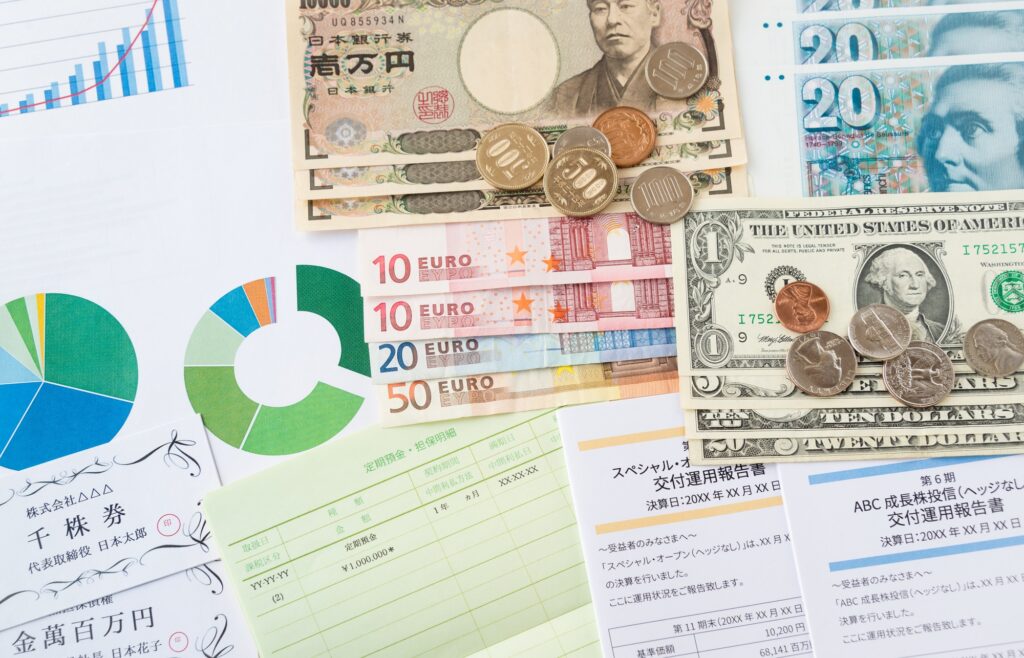What are the Legal Issues to be Aware of When Creating an ICO White Paper?

An Initial Coin Offering (ICO) is a fundraising method where funds are solicited in exchange for issuing virtual assets (tokens). This fundraising method, known as an ICO, proceeds through a process similar to the existing Initial Public Offering (IPO). In contrast to IPOs, ICOs have the advantage of having a high degree of design freedom and the ability to reduce the labor and financial costs of complex administrative procedures, as there are no laws directly regulating the scheme. However, the absence of a law that regulates the “correct way to conduct an ICO” also makes it more difficult to conduct an ICO with compliance considerations (for a comparison of ICOs and IPOs, please refer to a separate article).
https://monolith.law/blockchain/comparison-ico-ipo[ja]
In a sense, the various personalityistics of ICOs, such as the “freedom from uniform procedural work” and the “difficulty in distinguishing between legal and illegal activities,” are most clearly reflected in the way white papers are written. This article explains the legal issues that are likely to arise when conducting an ICO in relation to the contents of the white paper.
There’s No “Correct” Way to Write a White Paper
In the context of an Initial Coin Offering (ICO), a white paper refers to a document that outlines the purpose of fundraising, the intended use of the funds raised, and the plan for providing returns to investors. This can be likened to a “prospectus” in an Initial Public Offering (IPO). However, there is no specific template to follow when writing a white paper for an ICO. In fact, it’s not even mandatory to prepare a white paper when conducting an ICO legally.
In Japan, there are no laws directly regulating the scheme of ICOs, and therefore, the law does not actively provide any guidance on the “correct way to write a white paper”. This is why a variety of creative and appealing promotional materials have been produced in the numerous ICOs conducted in Japan so far. Thanks to the power of web marketing based on these contents, the appeal of tokens has been widely recognized, and there are countless cases where substantial funds have been successfully raised.
The law does not teach us how to create a white paper that “resonates” with investors. However, it does suggest a lot about the potential dispute risks that reckless content marketing can bring. Even if the primary goal is to fully convey the appeal of the tokens, what are the minimum legal requirements that must be complied with? Let’s take a look at them below.
White Paper Drafting Practice Based on the Provisions of the Japanese Financial Instruments and Exchange Act

What is the Financial Instruments and Exchange Act?
If the nature of the issued tokens falls under the category of “securities” under the Financial Instruments and Exchange Act (hereinafter referred to as the FIEA), then those tokens will be subject to the FIEA. The FIEA is a legal field aimed at protecting investors and promoting the healthy development of the securities market when issuing and trading securities.
There is no clear definition of “securities” under the FIEA. Instead, the securities that are subject to this law are listed one by one. Let’s take a look at Article 2 of the FIEA. Here, the specific types of securities that are subject to the FIEA, such as government bonds, corporate bonds, and stocks, are listed one by one.
Article 2: In this Act, “securities” refers to the following:
Financial Instruments and Exchange Act (FIEA)
1. Government bond securities
2. Local bond securities
3. Bonds issued by corporations under special laws (excluding those listed in the next item and item 11.)
4. Specific corporate bonds stipulated in the Act on Securitization of Assets (Law No. 105 of 1998)
5. Corporate bonds (including mutual company bonds. The same shall apply hereinafter.)
6. Investment securities issued by corporations established under special laws (excluding those listed in the next item, item 8, and item 11.)
7. Preferred investment securities stipulated in the Act on Preferred Investments by Cooperative Financial Institutions (Law No. 44 of 1993, hereinafter referred to as the “Preferred Investment Act”)
8. Preferred investment securities or new preferred subscription rights securities stipulated in the Act on Securitization of Assets
9. Stock certificates or new share option securities
10. Beneficiary securities of investment trusts or foreign investment trusts stipulated in the Act on Investment Trusts and Investment Corporations (Law No. 198 of 1951)
11. Investment securities, new investment unit option securities, or investment corporation bonds or foreign investment securities stipulated in the Act on Investment Trusts and Investment Corporations
(Omitted thereafter)
Incidentally, under the Civil Code, securities are defined as “certificates that represent private rights with monetary value,” which is considerably broader than the definition of securities under the FIEA.
The FIEA is a special law of the Civil Code (a legal field that modifies general principles and theories on a case-by-case basis). Therefore, it is good to understand that for broadly defined securities under the Civil Code, financial products that require significant disclosure (so-called disclosure) and prevention of unfair trading such as insider trading are regulated by the FIEA.
Is Crypto assets a “Security”?
Crypto assets is not included in the specific types of “securities” enumerated under the Japanese Financial Instruments and Exchange Act (FIEA). Therefore, as a general rule, crypto assets are not subject to the regulations of the FIEA. In fact, it has already been clarified by the Cabinet Office that regulations under the FIEA do not apply to representative crypto assets such as Bitcoin.
However, when issuing tokens in a new Initial Coin Offering (ICO), it is necessary to consider whether it falls under the collective investment schemes stipulated in Article 2, Paragraph 2, Item 5 of the FIEA.
Article 2
Financial Instruments and Exchange Act (FIEA)
2 The rights to be indicated on the securities listed in items 1 to 15 of the preceding paragraph, the securities listed in item 17 of the same paragraph (excluding those having the nature of the securities listed in item 16 of the same paragraph.) and the securities listed in item 18 of the same paragraph, as well as the rights to be indicated on the securities listed in item 16 of the same paragraph, the securities listed in item 17 of the same paragraph (limited to those having the nature of the securities listed in item 16 of the same paragraph.) and the securities listed in items 19 to 21 of the same paragraph (hereinafter referred to as “securities indication rights” in this and the following paragraph), even if the securities indicating such rights have not been issued, shall be deemed to be the securities, and the electronic record claims (meaning the electronic record claims prescribed in paragraph 1 of Article 2 of the Electronic Record Claims Act (Law No. 102 of 2007); the same shall apply hereinafter in this paragraph) which, taking into account the liquidity and other circumstances, are deemed necessary to be regarded as corporate bonds or other securities listed in the preceding paragraph by Cabinet Order (referred to as “specified electronic record claims” in item 7 and the following paragraph), shall be deemed to be the securities, and the following rights, even if they are rights other than those to be indicated on securities or certificates, shall be deemed to be securities and the provisions of this Act shall apply:
Five Rights based on a partnership contract prescribed in paragraph 1 of Article 667 of the Civil Code (Law No. 89 of 1896), an anonymous partnership contract prescribed in Article 535 of the Commercial Code (Law No. 48 of 1899), a contract for an investment business limited liability partnership prescribed in paragraph 1 of Article 3 of the Act on Investment Business Limited Liability Partnership Contracts (Law No. 90 of 1998), or a contract for a limited liability business partnership prescribed in paragraph 1 of Article 3 of the Act on Limited Liability Business Partnership Contracts (Law No. 40 of 2005), rights of members of a corporation and other rights (excluding those based on foreign laws), which are rights that enable the holder (hereinafter referred to as the “investor” in this item) who has made an investment or contribution in money (including those deemed by Cabinet Order to be similar thereto) to receive dividends of profits arising from the business (hereinafter referred to as the “investment target business” in this item) conducted by using such money or distribution of property related to such investment target business, and which do not fall under any of the following (excluding the rights to be indicated on the securities listed in the items of the preceding paragraph and the rights deemed to be securities by the provisions of this paragraph (excluding this item))
(Omitted)
In simple terms, this means that securities designed to conduct a business by making an investment in money by the investor and to distribute dividends to the investor based on the profits generated by the business, even if they are not securities listed in the FIEA, are subject to the FIEA. Therefore, when issuing new tokens in an ICO, if they conform to such a scheme, various disclosure obligations and report preparation obligations under the FIEA will be imposed on the ICO implementer. In summary, in relation to the FIEA, ICO implementers should pay particular attention to the applicability to collective investment schemes.
How Should We Ultimately Write a White Paper?
In practice, common issues that arise in relation to this collective investment scheme are how detailed the description of profit distribution to investors should be in the white paper to avoid being considered a financial product under the Japanese Financial Instruments and Exchange Act, and whether it will be regarded as a distribution based on the profits of the business. If you want to avoid increasing the burden on the ICO issuer by being subject to regulations under the Japanese Financial Instruments and Exchange Act, one approach is to refrain from providing detailed descriptions of these matters as much as possible. On the other hand, if you want to gain the trust of investors by explaining these matters as specifically as possible, designing tokens as financial products under the Japanese Financial Instruments and Exchange Act could be an option. There are certainly many points where the legal team should exercise discretion, taking into account the strategy of the ICO in question.
Legal Areas to Consider Beyond the Financial Instruments and Exchange Act
In addition to the matters stated in the white paper, the Financial Instruments and Exchange Act (Japanese Financial Instruments and Exchange Act) is not the only legal area to be aware of. If your case falls under the category of “virtual assets” in the Payment Services Act (Japanese Payment Services Act), you will need to register as a virtual assets exchange service provider. (Please refer to another article for the definition of virtual assets under the Payment Services Act and the obligations imposed on operators at that time.)
Furthermore, if the token is considered electronic money under the Payment Services Act, an obligation arises to deposit (trust) funds with the government according to the amount of electronic money issued. (Please refer to another article for the definition of electronic money under the Payment Services Act and the obligations imposed on operators at that time.)
Summary
In this article, we have discussed the issues that are often problematic in relation to the Financial Instruments and Exchange Act (Japanese Financial Instruments and Exchange Act) with respect to the contents of a white paper. The task of writing a white paper is not just about conveying the appeal of the token, but also a commitment to clarifying the rights of the investors. Therefore, it is important to keep in mind that how to fulfill the duty of explanation to investors is essentially a legal issue for the company.
Furthermore, the various legal regulations related to ICOs introduced in this article should be discussed separately, distinguishing between the mere formal wording to be included in the white paper (i.e., the choice of words in the text to be published in the media) and the essential issues related to the design of the token itself. Therefore, in order to carry out an ICO legally, it is necessary not only to conduct a legal check on the wording of the white paper, but also to ensure that there is consistency between the contents of the white paper and the initiatives that the company is actually undertaking.
Category: General Corporate
Tag: General CorporateIPO





















